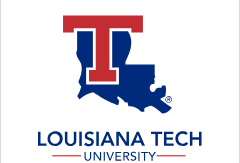Date of Award
Fall 11-20-2021
Document Type
Dissertation
Degree Name
Doctor of Philosophy (PhD)
Department
Mechanical Engineering
First Advisor
Henry Cardenas
Abstract
Various deleterious chemical species (including sulfates, chlorides, and others) contaminate concrete structures which are inherently porous and thus suffer from compromised durability. Several technologies have been developed for repairing concrete or enhancing the service life. Nevertheless, their efficiency, practicability, and cost can vary widely. Compared with chemical grout, fiber wrap, and traditional repair technology, electrokinetic nanoparticle treatment (EN) has been found to provide remarkable benefits for strength restoration and mitigation of durability problems via porosity reduction. Nanoparticle instability and over dosage issues can arise and lead to problems during treatments. In many cases, these treatment processes have been accompanied by significant particle losses and are known to cause deficiencies in treatment effectiveness. To deal with these unstable and low effectiveness issues, this dissertation was conducted to explore new electrokinetic nanoparticle treatment strategies to transport nanoparticles into concrete and cement effectively and efficiently. This study developed new methods involving simple tools (Turbidity, pH, and specific gravity) to monitor and sustain suspension stability. These tools made it possible to amend a given dosing strategy, as needed, in real-time. Other types of treatment adjustments were also examined. For example, a new turbidity monitoring method was developed to track the visually imperceptible phenomena of particle flocking early on, at the inception of its development, before it could harm a treatment outcome. A relationship between the turbidity and the specific gravity was developed to facilitate early detection of particle flocking. The tools, guidelines, and strategies achieved in this study were developed to enable the management of efficient (low-particle-loss) electrokinetic nanoparticle treatments by signaling in real-time when adjustments to the electric field, pH, and particle dosage increments were needed. High alumina cement specimens were subjected to EN treatment by determining the effect of using a low-concentration dosing strategy. The resultant impacts on compressive strength improvement (33%), porosity reduction (6.7% to 4.1%), and abrasion resistance enhancement (20%) indicated a relatively high effectiveness in particle delivery during the treatment. This was achieved even through the starting porosity value of the HAC were relatively low. A nanoparticle shockwave model was adapted from traffic control theory and modified to simulate particle transport behavior during EN treatment. This model was used to determine real-time particle mobility and predict a reliable treatment time for a given EN treatment. This predicted time was within 9% of the actual treatment time. A Front Area Ratio (FAR) model was also developed to predict the likelihood of a nanoparticle traffic jam and assess stability risks. This work also characterized the transport behavior of commercially available particles (NALCO 1056 (24 nm), Grace CL (12 nm), and Grace CL-P (22 nm)). These treatments were all found to effectively reduce porosity from 25% to 18% in average, and increased the compressive strength by 37% for ordinary Portland hardened cement paste specimens. The unit volume porosity reduction cost of utilizing the Grace CL-P particle was found to be 6 times lower than the NALCO 1056 applications. Both pH-inducedcollapse thresholds and thermal stability thresholds for each particle were determined to understand these impacts on treatment outcomes. To address electric field limitations, an alternative treatment circuit was developed to manage electrolysis-induced pH changes. This alternative treatment geometry increased the anode surface area by 120% and effectively stabilized particles while raising the threshold electric field value as high as the concrete damage current density threshold of 1 A/m2.
Recommended Citation
Zhong, Huayuan, "" (2021). Dissertation. 1007.
https://digitalcommons.latech.edu/dissertations/1007
Included in
Civil Engineering Commons, Mechanical Engineering Commons, Nanoscience and Nanotechnology Commons

